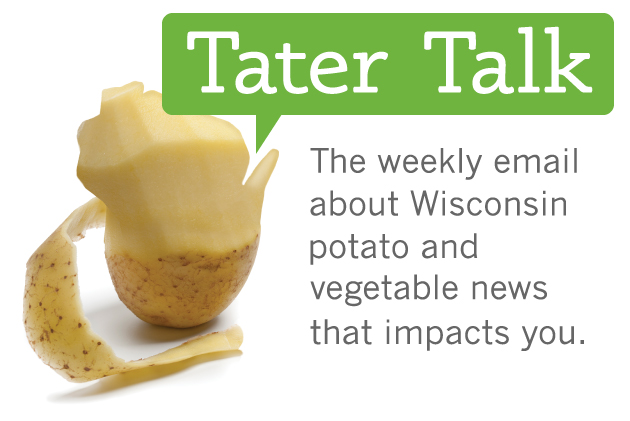Water – The Critically Important Resource for our Nation’s Food Security
In this current blog series we have been featuring graduate student research on potatoes in Wisconsin, and so far we have covered research in plant breeding, seed production and pest management. We are concluding this student series with 4 blogs on a topic that has emerged as one of the most critical issues facing agriculture today—water. Will there be a sufficient supply in the coming decades to maintain the productivity and security of our nation’s food supply while guaranteeing the long-term sustainability of the resource in future generations for all to enjoy?
In Wisconsin, the issue of water and its availability is particularly acute in the Central Sands region, which is one of the top five vegetable growing regions in the nation where potatoes, sweet corn, green beans, peas, carrots and cucumbers all rank near the top of U.S. production. The foundation of the region’s productivity lies in its geological history, which began during the glacial ice age that encompassed Wisconsin over 15,000 years ago. The Central Sands is a large and relatively flat glacial outwash plain that deposited abundant sandy soils—ideal for vegetable production—and is underlain by a deep groundwater aquifer that provides the water, vital for crop growth and productivity.
The region covers nearly 1,400 square miles and now supports 200,000 irrigated acres, but prior to the 1950s it was not farmed because there was no efficient way to utilize the abundant water supply and as such, much of the area remained undeveloped. In the mid-1950s, however, this largely unused, resource-poor area was transformed rapidly when modern irrigation technology became available and affordable due to aluminum supplies increasing after World War II. This raw material provided farmers the ability to build and deploy the center pivot irrigation systems that could, for the first time, deliver water to 160 acre crop fields in less than 24 hours. This quickly transformed the regional economic landscape into a thriving specialty crop production area which now supports a $6.4 billion food production industry and generates close to 40,000 jobs within the state of Wisconsin.
The extensive groundwater aquifer, where water is anywhere from 80 to 200 feet deep and often accessible within feet of the soil surface, is relatively unique in U.S. agriculture as the water in this system is normally replaced (re-charged) annually by rainfall. Maintaining the delicate balance between water use and natural recharge can be challenging, however, particularly during extended dry periods when increasing irrigation and a longer growing season created by climate change can disrupt the balance and reduce groundwater levels. While such reductions are usually transient and a matter of a few feet which do not threaten the overall aquifer, the impacts are seen quickly in higher elevation streams and lakes connecting the aquifer where reduced stream flows and lake levels create conflicts between those using the water for irrigation and those enjoying the recreational opportunities it provides.
Achieving a balance between agricultural use for irrigation to maintain an efficient and productive food supply and preserving the long-term sustainability of the water resource for everyone to enjoy in future generations is now the number one priority of Wisconsin potato and vegetable growers. They have invested heavily in research to seek solutions to water issues, and our next four blogs will feature some of the exciting graduate student research projects pursuing this goal. These young researchers represent the future of food production in U.S. agriculture, and we think that you will agree that it is in good hands!


